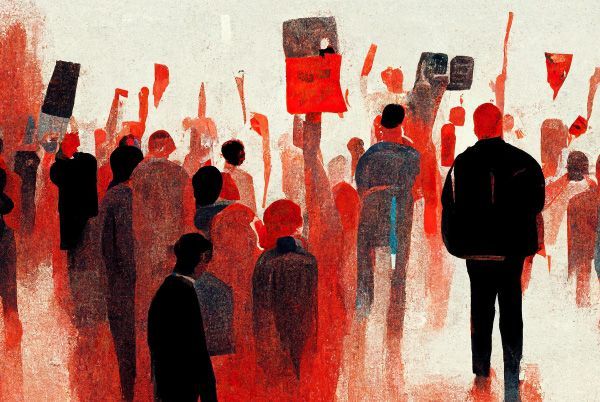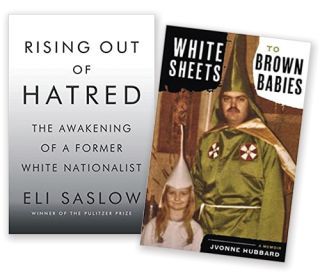Bias
How Do People Become Prejudiced?
Affect and cognition may interact to produce increased vulnerability to prejudice.
Posted December 30, 2022 Reviewed by Hara Estroff Marano
Key points
- Fragile self-esteem, shame, and fear may lead to blaming, bias, and prejudice.
- Bias and prejudice tend to involve excessive negative affects and diminished positive affects.
- Social deprivations are seen frequently in situations of prejudice and violence.

The seeds of bias, prejudice, and violence can be sown early. Both affect and and cognition may contribute to individual fear, rage, and social prejudice. Two aspects of affect are implicated—inborn capacity to assess differences in stimuli and temperament— as are two aspects of cognition: what one is taught and what one experiences. And as Adam Rutherford noted, “Structural racism is every day—and rooted in every day. It is rooted in indifference to the lived experience of the recipients of racism” (2020, p. 6).
The Roots of Prejudice in Individuals
Affect and cognition may interact to produce increased vulnerability to prejudice—i.e., consider the impact of parents, caregivers, and communities that are prejudiced or anxious creating a stranger-danger atmosphere in raising their children: Things (and people) that are different are to be feared and/or despised. Being mistreated, marginalized, or bullied inside or outside the home are risk factors for prejudice and violence.
Narcissistic problems (e.g., fragile self-esteem, shame), depression, distress, fear, setbacks in life, loss of purpose, and other dynamics may lead to a need to project and blame in order to protect or enhance oneself, with resultant bias and prejudice.
In general, underlying bias and prejudice tend to involve excessive negative affects and diminished positive affects, whether early in life or later. Much is known about the psychopathology and treatment of such individuals, groups, and leaders, but much is still to be learned (for example, Kohut, 1971; Kernberg, 1975, 1984; Basch, 1988; 2001; Kimmel, 2013, 2018).
How Prejudice Grows Among Groups and Societies
Social conditions can create fertile soil for nourishing bias, prejudice, and violence. It turns out that as adaptive and flexible as humans are, they are also fragile. When society does not offer security, esteem, and affirmation, then various groups within it splinter, members feel the need to protect themselves from outside dangers, and that can only be remedied from the top down—by economic, social, and political structures that let people calm down, reduce their sense of threat and begin to feel generous to others as they feel their society is generous to them.
Social deprivations are frequently apparent in situations marked by bias, prejudice, and violence. And from social deprivations emerge distress, fear, rage, shame, and disgust, along with a desire for control, power, and greed. Leaders are influential in these circumstances—for instance, consider the pathology of Hitler (Ullrich, 2016) and Stalin. And yet there are examples of positive change subsequent to horrible conditions: for example, the work of Lucius D. Clay and the Marshall Plan in Germany, and Douglas MacArthur in Japan after World War II.
In creating change, politicians and personnel attempting to decrease the prejudice and violence of such groups may find it useful to understand the dynamics of the groups’ specific fears, shame, rage, and deprivations driving their behaviors and fantasies. In addition, a focus on understanding the malevolent leader(s), their goals, attributes, and pathology may be beneficial. Ongoing efforts to make contact may be valuable in creating the possibility of alliance, containment, and change. Advances are possible through education of the groups and their members about solutions to their social circumstances and various aspects of possible assistance.
Two Cases: Derek Black and Jvonne Hubbard

Let’s close with two cases that deserve mention: Derek Black (Saslow, 2018, Rising Out of Hatred: The Awakening of a Former White Nationalist), and Jvonne Hubbard (White Sheets to Brown Babies, 2018). Both were raised by white supremacists, and both ultimately repudiated this stance. Black’s father founded the largest racist community on the internet, and his godfather was David Duke, a KKK Grand Wizard. Derek himself became an extremely popular figure and leading light of the white nationalist movement. Jvonne Hubbard was indoctrinated by her father, the grand Dragon of a faction of the KKK, to hate minorities.
Both began to question their beliefs in late adolescence/early adulthood. For Derek Black, this occurred when he went to college and was befriended by a group of fellow college students, including some who were Jewish. He also fell in love with a female classmate who began to get him to question the cognitive rationales for his prejudices. Jvonne was frequently in trouble with the law during her adolescence. Ultimately, she was incarcerated, and she was taken under the wing of older African-American women, and in that context began to heal and become less enraged, giving up her white supremacist views. Later, she adopted a biracial baby.
My colleague Kalia Doner and I interviewed Hubbard. We found her to be wonderfully open and thoughtful about her life and transition. She noted that the hatred instilled in her during her early years was particularly burdensome. In both these cases, positive affects and emotions—understanding and empathy, kindness, love, validation—nurtured by the people they met at a university and in jail, were essential to their transformations.
References
Basch MF (1988). Understanding Psychotherapy: The Science Behind the Art. New York: Basic Books.
Hubbard J (2018). White Sheets to Brown Babies. Jvonne Hubbard.
Kernberg O (1975). Borderline Conditions and Pathological Narcissism. New York: Jason Aronson.
Kernberg O (1984). Severe Personality Disorders: Psychotherapeutic Strategies. New Haven: Yale University.
Kimmel M (2013). Angry White Men: American Masculinity at the End of an Era. New York: Nation Books.
Kimmel M (2018). Healing from hate: How young men get into – and get out of – violent extremism. Oakland CA: University of California Press.
Kohut H (1971). The Analysis of the Self: A Systematic Approach to the Psychoanalytic Treatment of Narcissistic Personality Disorders. New York: International Universities Press.
Meloy JR (Ed.) (2001). The Mark of Cain: Psychoanalytic Insight and the Psychopath. Washington DC: American Psychological Association.
Rutherford A (2020). How to Argue with a Racist: What Our Genes Do (and Don’t) Say About Human Difference. New York: The Experiment, LLC.
Saslow E (2018). Rising Out of Hatred: The Awakening of a Former White Nationalist. New York: Doubleday.
Ullrich V (2016). Hitler: Ascent 1889-1939. New York: Alfred A. Knopf. Translated from the German by Jefferson Chase.


